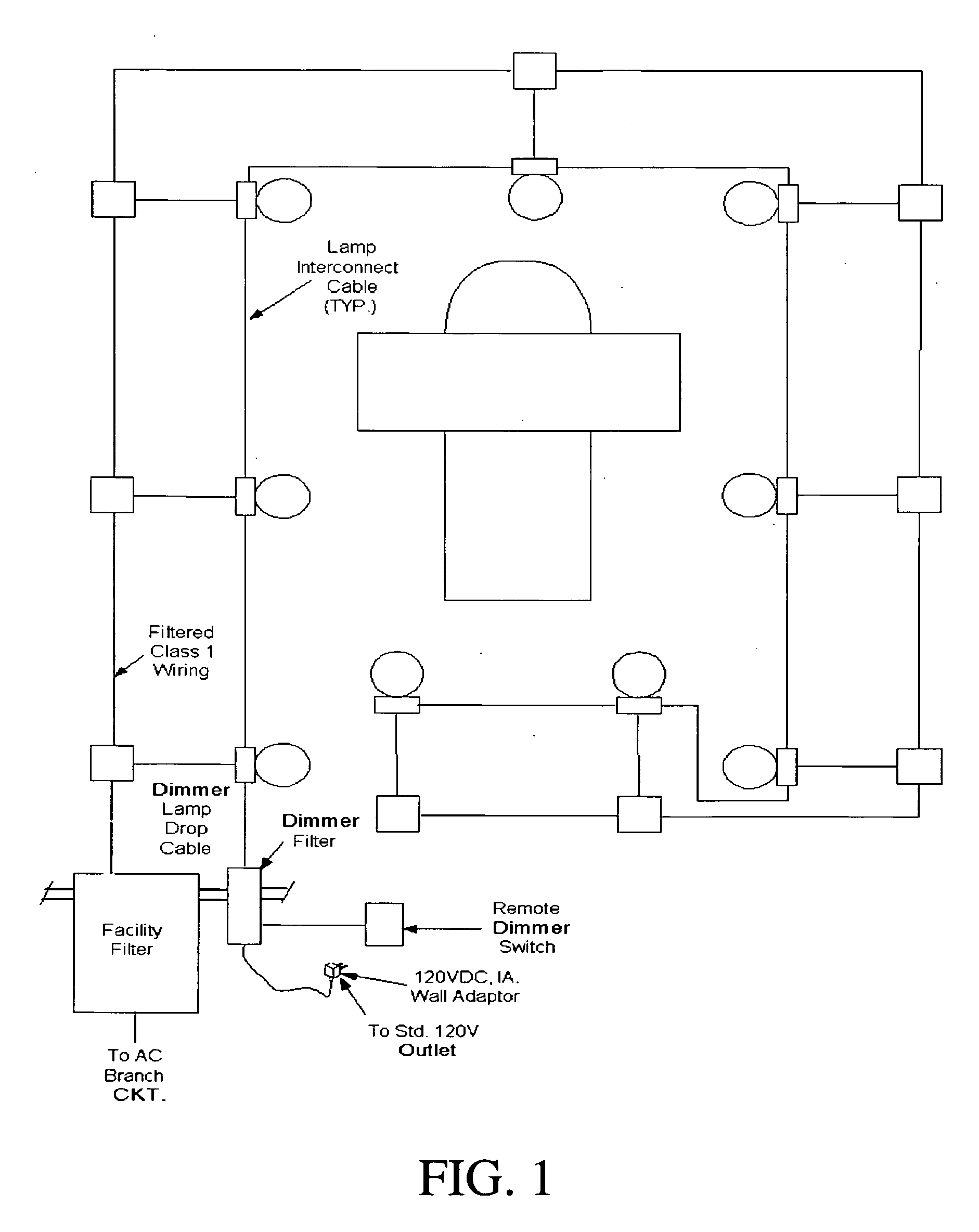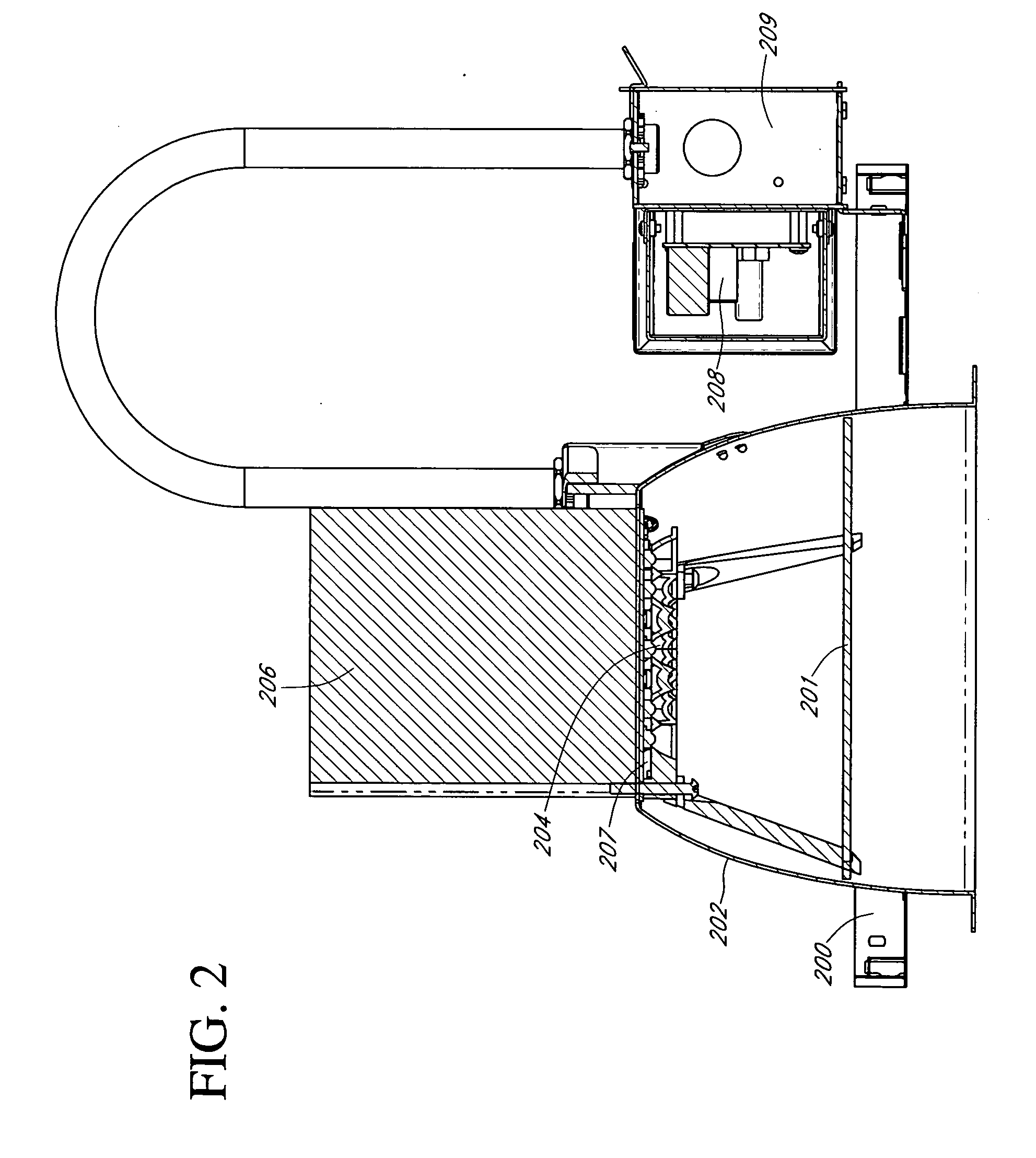LED lighting system for use in environments with high magnetics fields or that require low EMI emissions
- Summary
- Abstract
- Description
- Claims
- Application Information
AI Technical Summary
Benefits of technology
Problems solved by technology
Method used
Image
Examples
Embodiment Construction
[0030]FIG. 1 is a block diagram of a typical MRI room. The MRI magnet imaging equipment and patient table are centrally located in the room, which is enclosed by an electromagnetic shield, including all doors, windows, vents, and any other penetrations into the room.
[0031] The LED lighting fixtures LF1 through LF9 are powered by ordinary mains AC supplied via junction boxes and conduit as specified by applicable electrical codes. Power for the lighting circuit is supplied to the room through an EMI facility filter installed on the outside of the room shield on a penetration panel. This ensures that any EMI signals on the power line are removed or reduced to an acceptable level before entering the room.
[0032] The LED lighting fixtures are optionally connected to a dimmer control circuit via low-voltage Class 2 Lamp Interconnect Cables in a “daisy-chain” fashion. The dimmer control circuit also passes through a filter on the penetration panel to remove any EMI from ...
PUM
| Property | Measurement | Unit |
|---|---|---|
| Power | aaaaa | aaaaa |
| Magnetic field | aaaaa | aaaaa |
| Flexibility | aaaaa | aaaaa |
Abstract
Description
Claims
Application Information
 Login to View More
Login to View More - R&D
- Intellectual Property
- Life Sciences
- Materials
- Tech Scout
- Unparalleled Data Quality
- Higher Quality Content
- 60% Fewer Hallucinations
Browse by: Latest US Patents, China's latest patents, Technical Efficacy Thesaurus, Application Domain, Technology Topic, Popular Technical Reports.
© 2025 PatSnap. All rights reserved.Legal|Privacy policy|Modern Slavery Act Transparency Statement|Sitemap|About US| Contact US: help@patsnap.com



